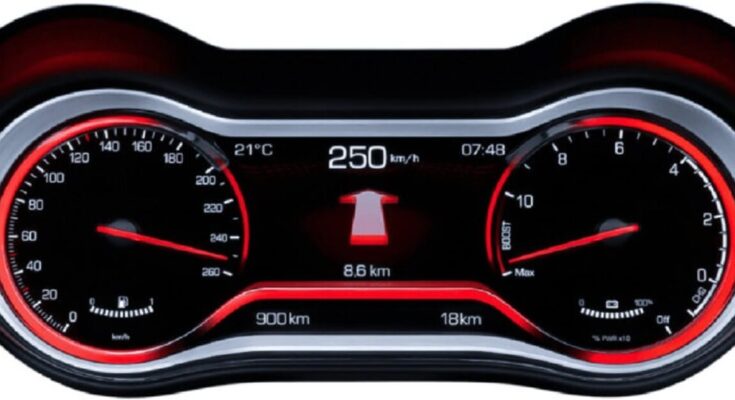The dashboard instrument cluster plays a pivotal role in every vehicle, delivering crucial information to the driver regarding the vehicle’s performance and status. It serves as the command center for the driver, displaying various gauges and indicators that help monitor the vehicle’s functions. In this article, we will delve deeper into the various components of a dashboard instrument cluster and explore their significance in enhancing the overall driving experience.
1. Speedometer
The speedometer is perhaps the most recognizable and prominent gauge in the instrument cluster. By prominently displaying the vehicle’s current speed, it enables the driver to adhere to both legal speed limits and maintain a safe driving pace. The speedometer often includes additional markings indicating different speed limits or ranges for reference.
Read Also: What Kind of Issues Can a Diesel Diagnostic Tool identify?
2. Tachometer
The tachometer determines the RPM of the engine. It helps the driver gauge the engine’s speed and assists in shifting gears at the right time, especially in manual transmission vehicles. For automatic transmission vehicles, it provides insights into the engine’s workload.
3. Fuel Gauge
The fuel gauge is an indicator that offers the measurement of the remaining fuel quantity in the gas tank. It helps the driver keep track of the fuel level, preventing unexpected fuel depletion and enabling timely refueling. The fuel gauge usually consists of a needle that moves across a range, indicating the remaining fuel quantity.
4. Temperature Gauge
The temperature gauge diligently monitors the engine’s coolant temperature, guaranteeing it remains within the prescribed safe operating range. It promptly notifies the driver in case of engine overheating, effectively mitigating the risk of consequential damage. By keeping an eye on the temperature gauge, drivers can take necessary precautions or seek assistance if the engine starts to overheat.
5. Odometer
The odometer displays the total distance traveled by the vehicle since its manufacture or since the last reset. It is a valuable tool for monitoring the vehicle’s overall usage and determining when regular maintenance is due. Odometers may also have additional features like trip meters, allowing drivers to track mileage for specific trips.
6. Warning Lights and Indicators
The dashboard instrument cluster also incorporates warning lights and indicators to alert the driver about potential issues or malfunctions. These lights can vary depending on the vehicle’s make and model but commonly include indicators for the engine check, battery charge, oil pressure, brake system, airbag status, and more. When a warning light illuminates, it is crucial for the driver to address the underlying problem promptly.
7. Multi-Information Display
Many modern instrument clusters feature a multi-information display (MID) or infotainment screen, providing a wide range of information beyond the traditional gauges. This display can present details such as navigation directions, audio system settings, tire pressure monitoring, vehicle settings, and various vehicle performance metrics. The MID enhances the driving experience by consolidating important data into a single, easily accessible interface.
As automotive technology advances, the instrument clusters are becoming increasingly sophisticated and incorporating more digital elements. Fully digital instrument clusters, often known as virtual cockpits, offer customizable layouts, vibrant graphics, and enhanced functionality. These digital clusters provide a more immersive and visually appealing experience while ensuring the availability of crucial information at a glance.
In conclusion, the dashboard instrument cluster serves as a vital communication hub between the driver and the vehicle. The collaborative functioning of its diverse components, including the speedometer, tachometer, fuel gauge, temperature gauge, odometer, warning lights, and multi-information display, synergistically delivers indispensable information, fostering a secure and well-informed driving experience. Understanding the significance of each component empowers drivers to make informed decisions and take appropriate actions while on the road.




